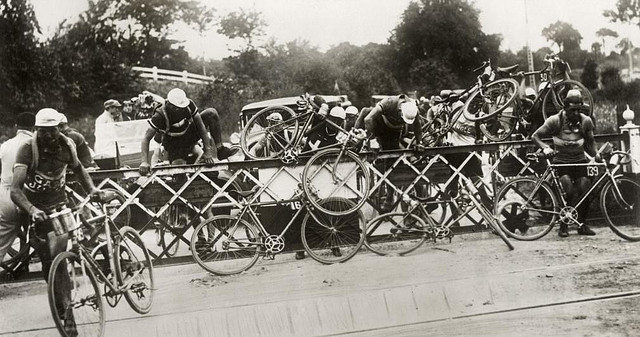This post is one in a series called Man Your Virtual Merch Table, looking at how music artists can best use marketing practices to share their work and make life long fans. You can read the rest of the posts here or follow the #ManYourMerch hashtag on Twitter for more.

Where are your people going? Image Credit: John Lucas
Last week we framed the way we will view the various subjects that the series will cover, in terms of the 4 Ps of the Marketing Mix.
Today, we move into more detail of the first in that mix, placement.
More specifically, we need to look at the places that your people go and how you can persuade them to join you on your artistic journey.
Pick the Right Places For Your Music
Our prevailing analogy is to a physical merch table at a live show. As anyone who has been to a variety of concerts will attest, the level of visibility of said table can be anywhere from a tiny desk in a dingy corner of a small club, to a perfectly placed parade of merch in an unavoidable thoroughfare of the venue.
We see much the same variety from artists selecting where to place themselves on the web. Some pick all the right places, going where their people go, while others are scarcely to be found and lack even the most basic website or social media presence. Clearly, if your fans and potential listeners can’t find you online, you’re erecting barriers to your own career progression.
As an artist your music needs to be easy to find and access, in the places that people want to access it.
Note that this is not a green light to start a presence on any and every music platform and social network out there. Even with several members of a band manning these digital channels, the workload will be untenable, resulting in your web presence ending up outdated and inconsistent. Instead, you need to find the best digital spaces to direct people to from the main hub of operations, your own artist site.
As a minimum, you should establish the following digital locations for listeners:
- Artist site - updated at least bi-weekly in some way. Include your story, news, photos, links to other web outposts, and the best quality music you have (at least one or two tracks available for free).
- Music streaming site - Bandcamp, SoundCloud, and ReverbNation all offer easy to use, well known streaming platforms. Make it clear to visitors that they can access more of your work there (or, even better, have the player plugged into your site).
- Two social networks - Twitter and Facebook are obviously the most heavily used, but the main consideration should be whether or not your type of fan is actively using the platform. Social media channels act as outposts to more easily connect and converse with music fans, from which you can guide interested folks back to your music hub of choice. Update them several times a week and always be listening.
- Digital music store - Which retail channels you choose is (and will be!) a blog post all of its own. Suffice it to say, there needs to be a way for listeners to pay for your music when they know they like it. That could mean anything from iTunes links to a full webstore all of your own, just don’t make it difficult for people to spend money on you!
For some musicians these are obvious points and long established, but I see enough acts overlooking the basics to believe it needs stating. For both them and the more socially savvy artists, though, the entire web presence boils down to one driving factor: go where your people go.
Filter every new platform consideration and website development through the question “will this improve my connection to the types of people who like my music?” If you’re not sure, either do more research to understand the platform’s user base or disregard it and move onto the next one.
Inextricably linked to the question of placement is, then, that of people. What types will you encounter and how can you persuade them to delve deeper into your music?
Persuading the Right People
 Once you understand who your people are, you have a far better chance of connecting with them in the right places and knowing how to communicate with them to build a lasting listener relationship.
Once you understand who your people are, you have a far better chance of connecting with them in the right places and knowing how to communicate with them to build a lasting listener relationship.
One-to-one connections are increasingly important as the barriers between fans and artists crumble to essentially nothing, if you choose to embrace the channels that allow it. As this communication with fans is going to be more time-consuming than it has been in the past, you need to be more efficient in finding the right people in whom you can invest that effort.
Again, we can return to the analogy of a live concert and the spectrum of people passing by your merch table, potentially interested in learning more about you and perhaps even buying something. The crowd often ranges from those with a significant interest to some who are outright hostile towards your music, and everything in between.
This spectrum and the appropriate ways to engage the people on it will be the focus of the next post this week, as I’m already pushing the upper word limits of attention spans here. If you have questions on anything related to placement and where your web presence should develop next, ask away in the comments below.
Remember also to sign up for the inner circle of the Man Your Virtual Merch Table series via the email box below. You’ll receive the newsletter – in the works now – that includes exclusive insights and resources available only to subscribers.
